|

The
USS Bluebird class is a fictional space craft that is part of the cast
of vehicles designed for Starfleet. This one is to fulfill the need for confidential material and
communiqués that could not be transmitted by subspace communication to be carried securely and safely. The
Bluebird class was a cheaper and reliable option to bolster the small number
of Defiant Pathfinders.
The new Bluebird class used technology and designs that had been incorporated into small ships like the Defiant, Nova and Sabre Classes.
Using four engine nacelles in the design gave it the ability to cover a distance of 50.5 light years within six days which is the equivalent to Warp 9.982. This distance is achieved by alternating or (Bouncing) the twin matter-antimatter reaction cores and nacelle pairs. This
lead to the phrase of “ Core Bouncing”.
The Bluebird class dose not have a large cargo capacity as compared to other courier. Due to this it was fitted with two sets of twin isolinear processing cores which gave the Bluebird class a capacity of 500 megaquads. This meant that the Bluebird class carries confidential data rather then materials. As well as the computer cores the Bluebird class carries the most up to date sensor package and weapons.
Due to the highly confidential information the class was out fitted with weapons and armour
expectted in larger ships. They also have a squad of marines on board whose purpose is to keep the ship and its contents secure.
In early 2414, Starfleet looked at overhauling the Bluebird class. The USS Road Runner was chosen as a test bed vessel. Its refit and over haul was extended to incorporate the changes that Starfleet command wanted to incorporate. They wanted to incorporate a surveyor role into its small frame. With the speed and large data storage capacity it was a more cost effective then upgrading larger vessels. The ship’s long range sensors were upgraded along the sensor arrays along with its hull, warp engines and impulse engines.
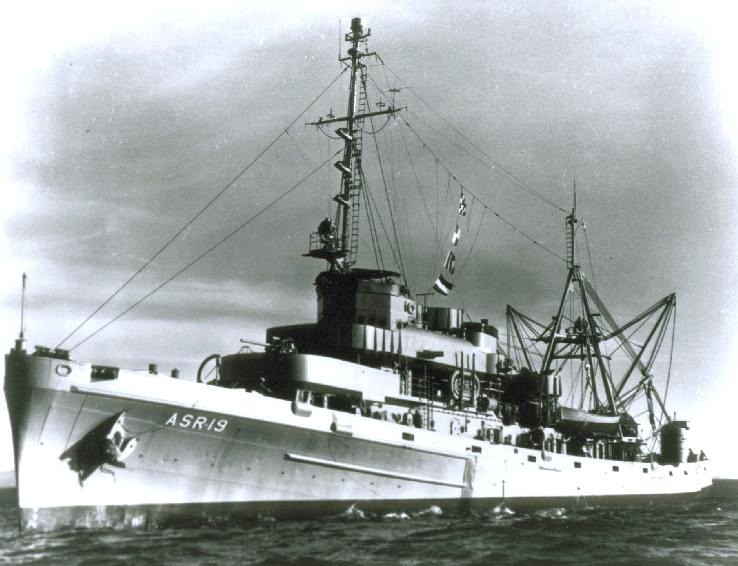
One
of the original US Navy ships to be christened "Bluebird." The
USS
Bluebird was
a Penguin class submarine rescue ship from 1950. The Penguin class ships
were all named after birds: Penguin, Skylark, Bluebird.
USS
BLUEBIRD SPECIFICATIONS
Length:
110 m
Width: 32 m
Height: 38 m
Decks: 7
Warp Drive
& Impulse Engines
Type: 2 Mark XI Compact Warp Drive
Power: Matter/Antimatter
Nacelles: 4
Normal Cruising Speed: Warp 9.5 for 24 hours (Each Core)
Emergency Speed: Warp 9.982 for 12 hours (Each Core)
Type: Type IV Impulse Propulsion System (IPS)
Power: Deuterium
No. Engines: 2
Defenses
Phaser Type: Mark XII arrays
Phaser locations: Fore 6 (3 Dorsal 3 Ventral), 4 Pylons (2 Port, 2 Starbord) 2 Aft.
Photon Torpedo Launcher Locations: 1Fore, 1 Aft
Photon Complement: 20
Primary Shields: Standard DEA Auto-Modulation Regenerative Shields
Armour: Ablative Hull Armour.
Tractor Beams: 1 Fore
Transporter Systems and Sensors
Standard (8 Man): 1
Cargo (8 Man Equivalent): 2 (One for each cargo bay)
Long Range Sensors: 30 Light Year Max Range
Takes 1 minute/per light year for intensive scan
Takes 1 second/per light year for standard scan
General scan is almost instant up to maximum range
Auxiliary Craft Carried
Type 6 Shuttlecraft: 1
Escape Pods: 5
Crew Capacity
Normal Complement: 40
Maximum Complement: 45
Maximum Passengers: 5
Maximum Life Support: 50
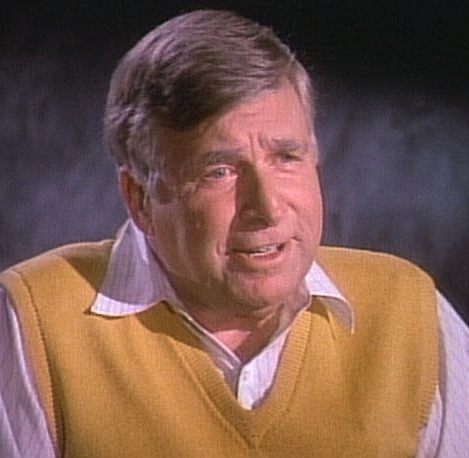
Gene
Roddenberry - the creative genius behind Star Trek
STAR
TREK CULT STATUS
Star Trek is an American science fiction entertainment franchise created by Gene Roddenberry,
currently under the ownership of CBS and Paramount.
Roddenberry was inspired by the Western, Wagon Train, the Horatio Hornblower novels and Gulliver's
Travels. Star Trek followed the interstellar adventures of James T. Kirk and the crew of an exploration vessel of a 23rd-century galactic "United Federation of Planets" — the Starship Enterprise.
As
with any swashbuckler the space ship is as important as the crew and the
mechanism for their adventures. Captain Kirk is a refreshing take on
heroes, being a thinker - and of course a man of action.
The Original Series", debuted in 1966 and ran for three seasons on NBC.
Four spin-off television series were eventually produced: Star Trek: The Next Generation, followed the crew of a new Starship Enterprise set a century after the original series; Star Trek: Deep Space Nine and Star Trek: Voyager, set contemporaneously with The Next Generation; and Star Trek: Enterprise, set before the original series, in the early days of human interstellar travel. Four additional The Next Generation feature films were produced. In
2009. Unfortunately, it all gets rather confusing as the franchise
owners milk the format. Star Trek Into Darkness, premiered on May 16, 2013.
Star Trek has been a cult phenomenon for decades. Fans of the franchise are called Trekkies or Trekkers.
Star Trek had a themed attraction in Las Vegas from 1998 to September 2008. At least two museum
exhibitions (of props) travel the world. The series has its own full-fledged constructed language, Klingon. Several parodies have been made of Star Trek.
Star Trek is noted for its influence on the world outside of science fiction. It has been cited as an inspiration for several technological inventions such as the cell phone.
The show is noted for its progressive civil rights stances. The original series included one of television's first multiracial casts, and the first televised inter-racial kiss. Star Trek references can be found throughout popular culture from movies such as the
submarine thriller Crimson Tide to the cartoon series South Park.
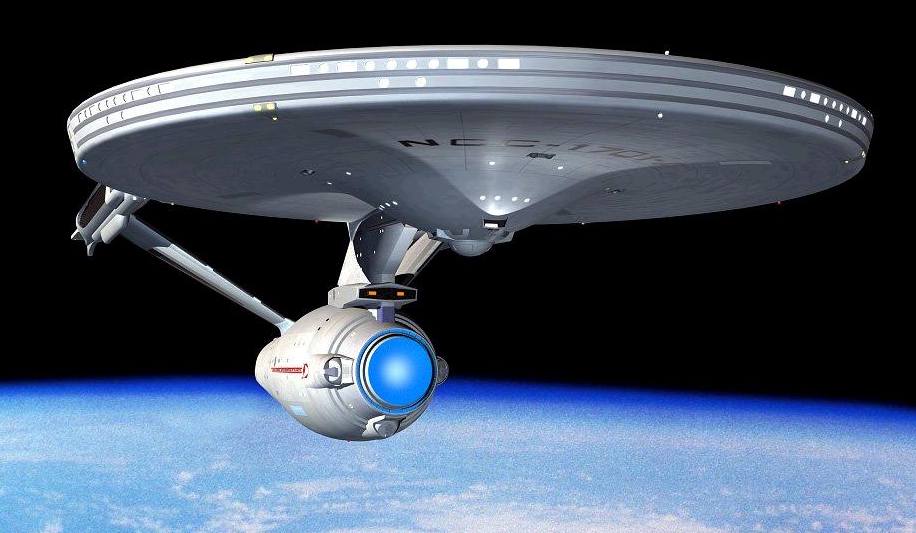
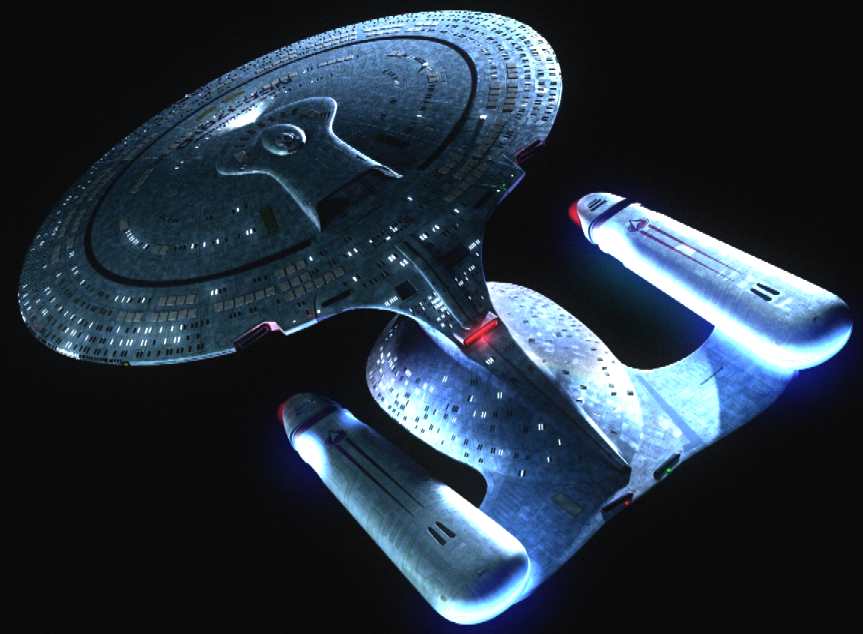
STAR
TREK IV - THE VOYAGE HOME
The Voyage Home is a 1986 American science fiction film released by Paramount Pictures. It is the fourth feature film based on the Star Trek science fiction television series and completes the story arc begun in The Wrath of Khan and continued in The Search for Spock. Intent on returning home to Earth to face trial for their crimes, the former crew of the USS Enterprise finds the planet in grave danger from an alien probe attempting to contact now-extinct humpback whales. The crew travel to Earth's past to find whales who can answer the probe's call.
After directing The Search for Spock, cast member Leonard Nimoy was asked to direct the next feature, and given greater freedom regarding the film's content. Nimoy and producer Harve Bennett conceived a story with an environmental message and no clear-cut villain. Dissatisfied with the first screenplay produced by Steve Meerson and Peter Krikes, Paramount hired The Wrath of Khan writer and director Nicholas Meyer. Meyer and Bennett divided the story between them and wrote different parts of the script, requiring approval from Nimoy, lead actor William Shatner and Paramount.
Principal photography commenced on February 24, 1986. Unlike previous Star Trek films, The Voyage Home was shot extensively on location; many real settings and buildings were used as stand-ins for scenes set around and in the city of San Francisco. Special effects firm Industrial Light & Magic (ILM) assisted in postproduction and the film's special effects. Few of the humpback whales in the film were real: ILM devised full-size animatronics and small motorized models to stand in for the real creatures.
The Voyage Home premiered on November 26, 1986, in North America, becoming the top-grossing film in the weekend box office. The film's humor and unconventional story were well received by critics, fans of the series and the general audience. It was financially successful, earning $133 million worldwide.
The film earned several awards and four Academy Award nominations for its cinematography and audio. It was dedicated to the crew of the Space Shuttle Challenger, which broke up 72 seconds after takeoff on the morning of January 28, 1986. Principal photography for The Voyage Home began four weeks after Challenger and her crew were lost.
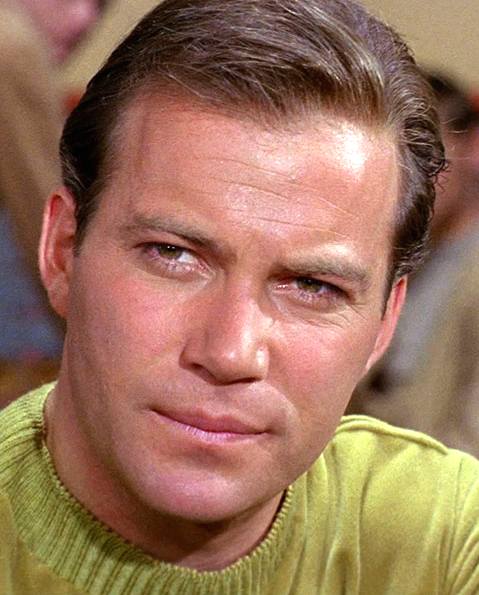
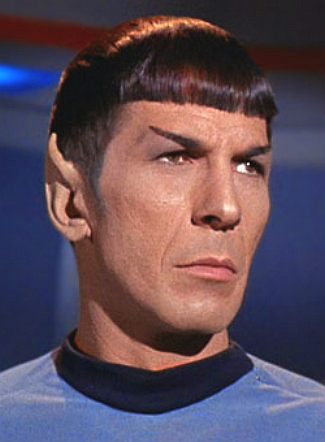
PLOT
SYNOPSIS
In 2286, a large cylindrical probe moves through space, sending out an indecipherable signal and disabling the power of starships it passes. As it takes up orbit around Earth, its signal disables the global power grid and generates planetary storms, creating catastrophic, sun-blocking cloud cover. Starfleet Command sends out a planetary distress call and warns starships not to approach Earth.
On the planet Vulcan, the former officers of the USS Enterprise are living in exile (after the events of Star Trek III: The Search for Spock). Accompanied by the Vulcan Spock, still recovering from his resurrection, the
crew - except for Saavik, who remains on Vulcan - take their captured Klingon Bird-of-Prey starship and head to Earth to face trial for their theft and destruction of the Enterprise. Hearing Starfleet's warning, Spock determines that the probe's signal matches the song of extinct humpback whales, and that the object will continue to wreak havoc until its call is answered. The crew uses their ship to travel back in time via a slingshot maneuver around the Sun, planning to return with a whale to answer the alien signal.
Arriving in 1986, the crew finds the maneuver drained most of the Bird-of-Prey's power, leaving it with enough for only one day. Hiding their ship using its cloaking device in San Francisco's Golden Gate Park, the crew split up to accomplish several tasks: Admiral James T. Kirk and Spock attempt to locate humpback whales, while Montgomery Scott, Leonard McCoy and Hikaru Sulu construct a whale tank for the return trip. Uhura and Pavel Chekov are tasked to find a way to recharge the ship's dilithium crystals.
Kirk and Spock discover a pair of whales named "George" and
"Gracie," in the care of Dr. Gillian Taylor at the Cetacean Institute in Sausalito, a museum dedicated to the study of whales, and learn they will soon be released into the wild. Kirk attempts to learn the tracking frequency for the whales from Taylor, but she refuses to cooperate, at least until she stumbles upon the ship. Scott, McCoy, and Sulu trade the formula of transparent aluminum for the materials needed for the whale tank. Uhura and Chekov locate a nuclear-powered ship, and find it is the aircraft carrier Enterprise. While collecting some of its power for their ship, their presence is discovered. Uhura is beamed back but Chekov is captured and severely injured in an escape attempt. Kirk, McCoy and Taylor rescue him from a hospital and return to the now-recharged ship.
Taylor learns the whales have been released early. She gives Kirk the tracking frequency but tricks him to board the Bird-of-Prey with him. They approach George and Gracie, who are being pursued by whalers. Kirk scares away the whalers by decloaking the starship as it hovers above them. After transporting the whales aboard the Bird-of-Prey, the crew returns to the future with Taylor. On approaching Earth, the ship loses power and crashes into San Francisco Bay. Once released, the whales respond to the probe's signal, causing the object to revert its climatic effects on Earth and return to the depths of space. All charges against the Enterprise crew are dropped; however, as punishment for disobeying a superior officer (as chronicled in the previous film), Kirk is demoted to the rank of Captain. The crew departs on their ship, the newly christened USS Enterprise (NCC-1701-A), and leaves on a new mission.
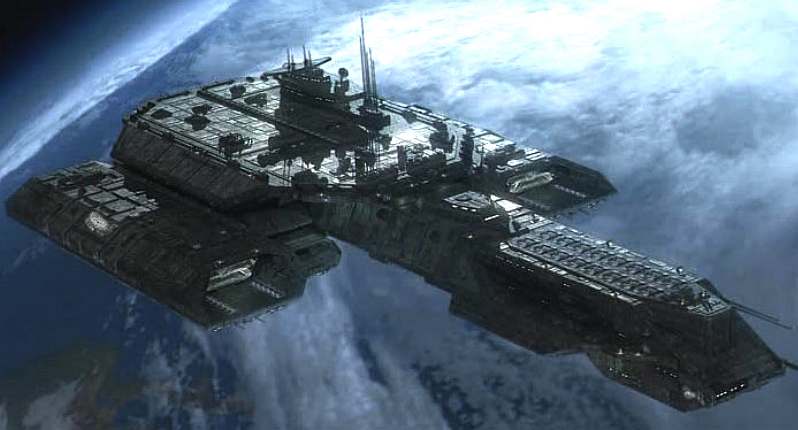
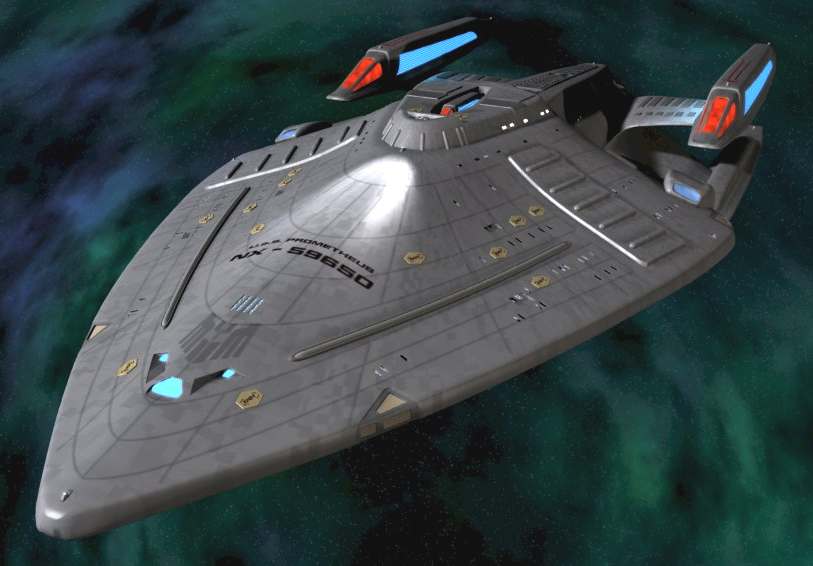
CASTING
Thankfully, William Shatner plays Admiral James T. Kirk, former captain of the Enterprise. Shatner was unwilling to reprise the role of Kirk until he received a salary of $2 million and the promise of directing the next film. Shatner described The Voyage Home's comic quality as one "that verges on tongue-in-cheek but isn't, it's as though the characters within the play have a great deal of joy about themselves, a joy of living [and] you play it with the reality you would in a kitchen-sink drama written for today's life."
of course, this is fiction inviting us to believe in space travel, thus
the whole idea is tongue-in-cheek, and we like the theme.
Nobody
would say the acting is brilliant, but then the cast work hard to
maintain a high quality of portrayal, that is in itself rather good. The
film 'Aliens,' on the other hand, is superb because the acting is
brilliant and the story is well thought out. We are rather primed by
Star Trek to allow ourselves to believe in alien life forms that are
advanced. Well, at least for 1.5 hours while we immerse ourselves in the
silver screen.
Leonard Nimoy is the director of the film and plays Spock, who was resurrected by the effects of a powerful terraforming device and had his "living spirit" restored to his body in the previous film. DeForest Kelley portrays Doctor Leonard McCoy, who is given many of the film's comedic lines; Kelley biographer Terry Lee Rioux wrote that in the film "he seemed to be playing straight man to himself". On Earth McCoy was paired with engineer Montgomery Scott (James Doohan), as producer Harve Bennett felt that Kelley worked well with [Doohan's] "old vaudeville comic". The other members of the Enterprise crew include George Takei as helmsman Hikaru Sulu, Walter Koenig as Commander Pavel Chekov, and Nichelle Nichols as Uhura. Koenig commented that Chekov was a "delight" to play in this film because he worked best in comedic situations.
Catherine Hicks plays Doctor Gillian Taylor, a biologist on 20th century Earth. During production a rumor circulated that the part had been created after Shatner demanded a love interest, a regular aspect of the television series that was absent from the first three films. Writer Nicholas Meyer denied this, saying that the inspiration for Taylor came from a woman biologist featured in a National Geographic documentary about
whales. Nimoy chose Hicks after inviting her to lunch with Shatner and witnessing a chemistry between the two.
Majel Barrett reprises her role as Christine Chapel, the director of Starfleet Command's medical services. Many of her
scenes - some reportedly very large - were omitted in the final cut, angering the actress. Her final role in the film consists of one line of dialogue and a reaction shot. Mark Lenard and Jane Wyatt play Ambassador Sarek and Amanda Grayson, respectively, Spock's parents. Wyatt commented that although she generally disliked working with actors who were directing, she found Nimoy an exception because he could concentrate on being part of the cast as well as setting up the crew. Robin Curtis reprises the role of Saavik, a Starfleet lieutenant. Saavik's role is minimal in the film—originally, she was intended to remain behind on Vulcan because she was pregnant after she had mated with the younger Spock in Star Trek III: The Search for Spock. In the final cut of the film, all references to her condition were dropped.
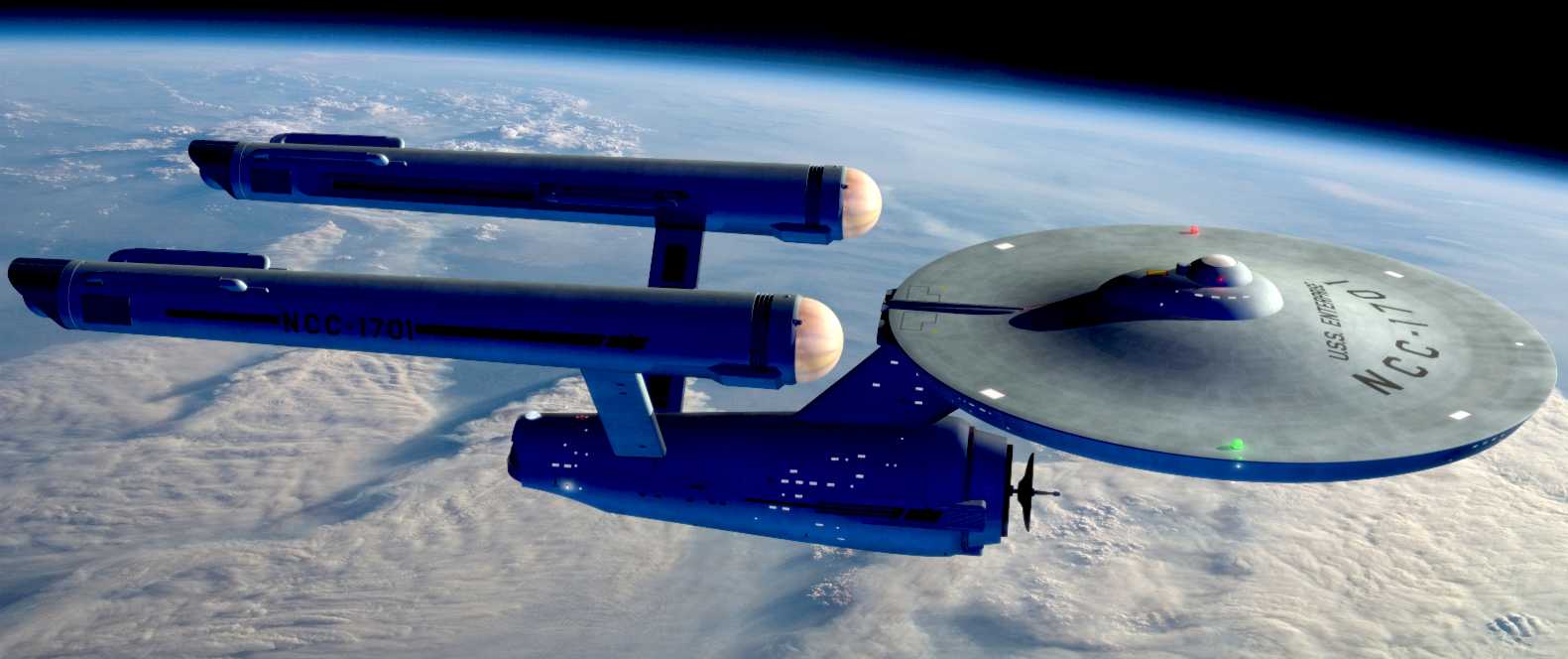
STORY DEVELOPMENT
Leonard directed the Search for Spock under certain constraints. With
this film Paramount gave the director greater freedom for the sequel. "[Paramount] said flat out that they wanted my vision," Nimoy recalled. In contrast to the drama-heavy and operatic events of previous Star Trek features, Nimoy and producer Harve Bennett wanted a lighter movie that did not have a clear-cut villain. As William Shatner was unwilling to return, Nimoy and Bennett spent eight months considering a prequel concept by Ralph Winter about the characters at Starfleet Academy, before Shatner received an
offer that was acceptable, and let's face it, for many a Trek film is
not a Trek film without William. Nimoy and Shatner each received $2.5 million for the film, less than their original demands, but the film cast's rising salaries caused Paramount to create a new television series, Star Trek: The Next Generation (1987), with less-expensive, lesser-known actors.
Despite Shatner's doubts, Nimoy and Bennett selected a time travel story in which the Enterprise crew encounters a problem that could only be fixed by something only available in the present day (the Star Trek characters' past). They considered ideas about violin makers and oil drillers, or a disease that had its cure destroyed with the rainforests. "But the depiction of thousands of sick and dying people seemed rather gruesome for our light-hearted film, and the thought of our crew taking a 600-year round trip just to bring back a snail darter wasn't all that thrilling," explained Nimoy. The director read a book on extinct animals and conceived the storyline that was eventually adopted. Nimoy hit upon the idea of humpback whales after talking with a friend—their song added mystery to the story, and their size added logistical challenges the heroes would have to overcome.
Nimoy approached Beverly Hills Cop writer Daniel Petrie, Jr. to write the screenplay when a concept that executive producer Jeffrey Katzenberg described as "either the best or worst idea in the world"
arose - Star Trek fan Eddie Murphy wanted a starring role. Nimoy and Murphy acknowledged his part would attract non-Star Trek fans to the franchise following the rising popularity of Murphy, but it also meant the film might be ridiculed. Steve Meerson and Peter Krikes were hired to write a script with Murphy as a college professor who believes in aliens and likes to play whale songs. Murphy disliked the part, explaining he wanted to play an alien or a Starfleet officer, and chose to make The Golden Child—a decision Murphy later said was a mistake. The character intended for Murphy was combined with those of a marine biologist and a female reporter to become Gillian Taylor.
Paramount was dissatisfied with the script, so its head of production Dawn Steele asked Nicholas Meyer, the writer and director of Star Trek II: The Wrath of Khan, to help rewrite it. Meyer never read the earlier script, reasoning it pointless to do so since the content had no appeal to the studio. He and Bennett split the task of conceiving the plot between them. Bennett wrote the first quarter of the story, up to the point where the crew goes back in time. Meyer wrote the story's middle portion, taking place on 20th-century Earth, and Bennett handled the ending. After 12 days of writing, Meyer and Bennett combined their separate portions. In this version, Gillian Taylor stays on 1986's Earth and vows to ensure the survival of the humpback whale despite the paradox it could create. Meyer preferred this "righter ending" to the film version, explaining "The end in the movie detracts from the importance of people in the present taking the responsibility for the ecology and preventing problems of the future by doing something today, rather than catering to the fantasy desires of being able to be transported in time to the near-utopian
future." Meyer and Bennett cut out Krikes and Meerson's idea of having the Klingon Bird-of-Prey fly over the Super Bowl and the hint that Saavik remained on Vulcan because she was pregnant with Spock's child.
Nimoy said Meyer gave the script "the kind of humor and social comment, gadfly attitude I very much wanted". He added that his vision was for "no dying, no fighting, no shooting, no photon torpedoes, no phaser blasts, no stereotypical bad guy. I wanted people to really have a great time watching this film [and] if somewhere in the mix we lobbed a couple of big ideas at them, well, then that would be even better." One of Meyer's earlier films, Time After Time, was largely based in San Francisco; when he was told by the producers that The Voyage Home had to be set in the same city, he took the opportunity to comment upon cultural aspects not covered by his earlier film, such as punk rock—The Voyage Home's scene where Kirk and Spock meet an annoying punk rocker was based on a similar scene cut from Time After Time.
Meyer found writing the script to be a smooth process. He would write a few pages, show it to Nimoy and Bennett for consultation, and return to his office to write some more. Once Nimoy, Bennett, and Meyer were happy, they showed the script to Shatner, who offered his own notes for another round of rewrites. The completed script was shown to Paramount executives, who were very pleased.
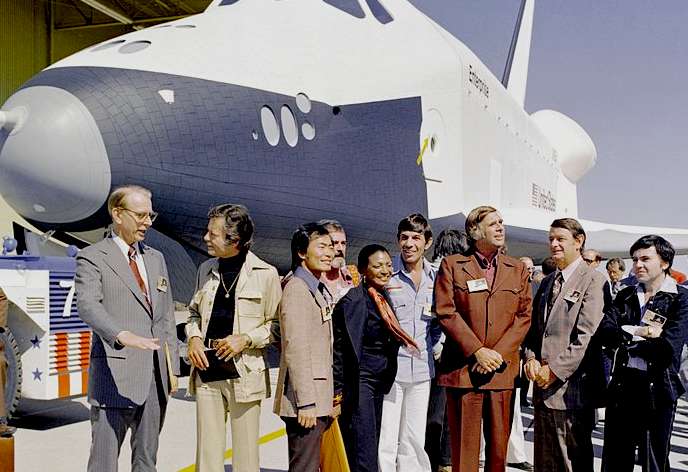
PRODUCTION DESIGN
Industrial Light & Magic (ILM) was responsible for The Voyage Home's model design and optical effects. The alien probe was the responsibility of ILM's model shop, which brought in outside help like illustrator Ralph McQuarrie for concept art. The modelmakers started with art director Nilo Rodis' basic design, a simple cylinder with whalelike qualities. The prototype was covered with barnacles and colored. The ball-shaped antenna that juts out from the bottom of the probe was created out of a piece of irrigation pipe; internal machinery turned the device. Three sizes of the probe were created; the primary 8-foot (2.4 m) probe model was supplemented by a smaller model for wide shots and a large 20-foot (6.1 m) model that used forced perspective to give the probe the illusion of massive dimensions.
The effects crew focused on using in-camera tricks to realize the probe; postproduction effects were time-consuming, so lighting effects were done on stage while filming. Model shop supervisor Jeff Mann filled the probe's antenna with tube lamps and halogen bulbs that were turned on in sequence for different exposures; three different camera passes for each exposure were combined for the final effect. After watching the first shot, the team found the original, whalelike probe design lacking of menace. The modelmakers repainted the probe a shiny black, pockmarked its surface for greater texture and interest, and re-shot the scene. Although they wanted to avoid postproduction effects work, the opticals team had to recolor the antenna ball in a blue hue, as the original orange looked too much like a spinning basketball.
Aside from the probe, The Voyage Home required no new starship designs. The USS Saratoga, the first Federation starship disabled by the probe, was the USS Reliant model from The Wrath of Khan. The Bird-of-Prey model from The Search for Spock was reused, but ILM built additional sturdy versions for The Voyage Home's action sequences. The inside of the Bird-of-Prey was represented by a different set than The Search for Spock, but the designers made sure to adhere to a sharp and alien architectural aesthetic. To give the set a smokier, atmospheric look, the designers rigged display and instrumentation lights to be bright enough that they could light the characters, rather than relying on ambient or rigged lighting. While Paramount had instructed ILM to trash the large Spacedock model created for The Search for Spock, the team had been loath to discard the complicated model and its miles of fiber optic lighting. When The Voyage Home called for the return of Spacedock, ILM had only to reassemble the model from storage.
Robert Fletcher served as costume designer for the film. During the Earth-based scenes, Kirk and his gang continue to wear their 23rd-century clothing. Nimoy debated whether the crew should change costumes, but after seeing how people in San Francisco are dressed, he decided they
might fit in.
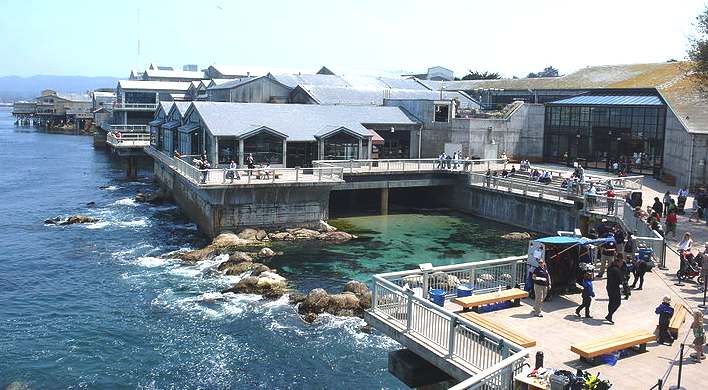
FILMING
Nimoy chose Donald Peterman, ASC, as director of photography. Nimoy said he regarded the cinematographer as a fellow artist, and that it was important for them to agree on "a certain look" that Peterman was committed to delivering. Nimoy had seen Peterman's work and felt it was more nuanced than simply lighting a scene and capturing an image.
The film's opening scenes aboard the starship Saratoga were the first to be shot; principal photography commenced on February 24, 1986. The set was a redress of the science vessel Grissom's bridge from The Search for Spock, in turn a redress of the Enterprise bridge created for The Motion Picture. The scenes were filmed first to allow time for the set to be revamped as the bridge of the new Enterprise-A at the end of filming.
As with previous Star Trek films, existing props and footage were reused where possible to save money, though The Voyage Home required less of this than previous films. The Earth Spacedock interiors and control booth sets were reused from The Search for Spock, although the computer monitors in these scenes featured new graphics—the old reels had deteriorated in storage. Stock footage of the destruction of the Enterprise and the Bird-of-Prey's movement through space were reused. While the Bird-of-Prey bridge was a completely new design, other parts of the craft's interior were also redresses; the computer room was a modification of the reactor room where Spock died in The Wrath of Khan. After all other Bird-of-Prey bridge scenes were completed, the entire set was painted white for one shot that transitioned into a dream sequence during the time travel.
The Voyage Home was the first Star Trek film to extensively film on location—only one day was spent doing so in The Search for Spock. Much of the production was filmed in and around San Francisco during ten days of shooting. The production wanted to film scenes that were readily identifiable as the city. The use of extensive location shooting caused logistical problems; a scene in which Kirk is nearly run over by an irate driver required 12–15 cars to be repositioned if the shot was incorrect, taking a half-hour to reshoot. Other scenes were filmed in the city but used sets rather than real locations, such as an Italian restaurant where Taylor and Kirk eat. In the film, the Bird-of-Prey lands cloaked in Golden Gate Park, surprising trashmen who flee the scene in their truck. The production had planned to film in the real park, where they had filmed scenes for The Wrath of Khan, but heavy rains before the day of shooting prevented it—the garbage truck would have become bogged down in the mud. Will Rogers Park in western Los Angeles was used instead.
When Kirk and Spock are traveling on a public bus, they encounter a punk rocker blaring his music on a boom box, to the discomfort of everyone around him. Spock takes matters into his own hands and performs a Vulcan nerve pinch. Part of the inspiration for the scene came from Nimoy's personal experiences with a similar character on the streets of New York; "[I was struck] by the arrogance of it, the aggressiveness of it, and I thought if I was Spock I'd pinch his brains out!" On learning about the scene, Kirk Thatcher, an associate producer on the film, convinced Nimoy to let him play the role; Thatcher shaved his hair into a mohawk and bought clothes to complete the part. Credited as "punk on bus", Thatcher (along with sound designer Mark Mangini) also wrote and recorded "I Hate You", the song in the scene, and it was his idea to have the
punk - rendered unconscious by the pinch - hit the stereo and turn it off with his face.
Much of the Cetacean Institute, Taylor's workplace, was created by using the real-life Monterey Bay Aquarium. A holding tank for the whales was added via special effects to the Aquarium's exterior. For close-ups of the characters as they watched the whales in the tank, the Aquarium's walls and railings were measured and replicated for a set on the Paramount parking lot. One scene takes place by a large glass through which observers view the
whales - and Spock's initiation of a mind meld - underwater. Footage of the actors shot in front of them as they reacted to a brick wall in the Aquarium was combined with shots taken from their rear as they stood in front of a large blue screen at ILM to produce this scene. The footage of Spock's melding with the whales was shot weeks later in a large water tank used to train astronauts for weightlessness.
In the film, Uhura and Chekov visit the aircraft carrier USS Enterprise. The real Enterprise, out at sea at the time, was unavailable for filming, so the non-nuclear-powered carrier USS Ranger (CV-61) was used. Oakland International Airport was used for the foreground element of Starfleet Headquarters. Scenes in the San Francisco Bay were shot at a tank on Paramount's backlot.
The scene in which Uhura and Chekov question passersby about the location of nuclear vessels was filmed with a hidden camera. However, the people with whom Koenig and Nichols speak were extras hired off the street for that day's shooting and, despite legends to the contrary, knew they were being filmed. In an interview with StarTrek.com, Layla Sarakalo, the extra who said, "I don't know if I know the answer to that... I think it's across the bay, in Alameda", stated that after her car was impounded because she refused to move it for the filming, she approached the assistant director about appearing with the other extras, hoping to be paid enough to get her car out of impoundment. She was hired and told not to answer Koenig's and Nichols' questions. However, she answered them and the filmmakers kept her response in the film, though she had to be inducted into the Screen Actors Guild in order for her lines to be kept.
Vulcan and the Bird-of-Prey exterior was created with a combination of matte paintings and a soundstage. Nimoy had searched for a suitable location for the scene of the Enterprise crew's preparations to return to Earth, but various locations did not work, so the scene was instead filmed on a Paramount backlot. The production had to mask the fact that production buildings were 30 feet (9.1 m) away. A wide-angle shot of Spock on the edge of a cliff overlooking the scene was filmed at Vasquez Rocks, a park north of Los Angeles. The Federation council chamber was a large set filled with representatives from many alien races. Production manager Jack T. Collis economized by building the set with only one end; reverse angle shots used the same piece of wall. The positions of the Federation President's podium and the actors on the seats were switched for each shot. Since The Voyage Home was the first Star Trek film to show the operations at Starfleet Command, Bennett and Nimoy visited NASA's Jet Propulsion Laboratory to learn how a real deep space command center might look and operate. Among the resulting set's features was a large central desk with video monitors that the production team nicknamed "the pool table"; the prop later became a fixture in USS Enterprise-D's engine room on the television series Star Trek: The Next Generation.
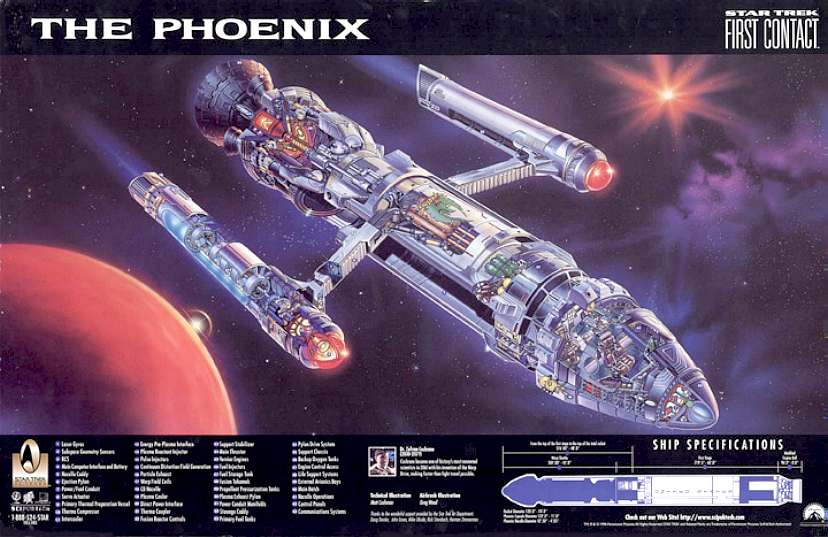
SPECIAL EFFECTS
Nimoy approached ILM early in development and helped create storyboards for the optical effects sequences. Many shots used matte paintings to extend backgrounds and create establishing shots without the cost of building a set. Matte supervisor Chris Evans attempted to create paintings that felt less contrived and more real—while the natural instinct of filmmaking is to place important elements in an orderly fashion, Evans said that photographers would "shoot things that [...] are odd in some way" and end up with results that look natural instead. The task of establishing the location and atmosphere at Starfleet Headquarters fell to the matte department, who had to make it feel like a bustling futuristic version of San Francisco. The matte personnel and Ralph McQuarrie provided design input. The designers decided to make actors in the foreground more prominent, and filmed them on a large area of smooth concrete runway at the Oakland Airport. Elements like a shuttlecraft that thirty extras appeared to interact with were also mattes blended to appear as if they were sitting by the actors. Ultimately the artists were not satisfied with how the shot turned out; matte photography supervisor Craig Barron believed that there were too many elements in the scene.
The scenes of the Bird-of-Prey on Vulcan were combinations of live-action footage—actors on a set in the Paramount parking lot that was covered with clay and used backdrops—and matte paintings for the ship itself and harsh background terrain. The scene of the ship's departure from Vulcan for Earth was more difficult to accomplish; the camera pans behind live-action characters to follow the ship as it leaves the atmosphere, and other items like flaming pillars and a flaring sun had to be integrated into the shot. Rather than try to match and combine camera pans of each element, each component was shot with a static camera and the pan was added to the resulting composite by a motion control camera. The sun (a light bulb focused by a convex lens) was shot in different passes to create realistic light effects on the Bird-of-Prey without having the light bleed around other elements in the shot.
The script called for the probe to vaporize the Earth's oceans, generating heavy cloud cover. While effects cinematographer Don Dow wanted to go to sea and record plumes of water created by exploding detonating cords in the water, the team decided to create the probe's climatic effect in another way after a government fishing agency voiced concerns for the welfare of marine life in the area. The team used a combination of baking soda and cloud tank effects; the swirling mist created by the water-filled tank was shot on black velvet, and color and dynamic swirls were added by injecting paint into the tank. These shots were composited onto a painting of the Earth along with overlaid lightning effects, created by double-exposing lights as they moved across the screen.
The Bird-of-Prey's travel through time was one of the most difficult effects sequences of the film. While ILM was experienced in creating the streaking warp effect they used for previous films, the sequence required the camera to trail a sustained warp effect as the Bird-of-Prey rounded the sun. Matching the effect to the model was accomplished through trial-and-error guesswork. The team did not have the time to wait for the animation department to create the sun for this shot. Assistant cameraman Pete Kozachic devised a way of creating the sun on-stage. He placed two sheets of textured plexiglass next to each other and backlit them with a powerful yellow light. The rig was rotated on a circular track and the sheet in front created a moire pattern as its position shifted. Animator John Knoll added solar flare effects to complete the look; Dow recalled that the effect came close to matching footage of the sun taken by the Jet Propulsion Laboratory.
Traveling through time, Kirk and crew experience what author Jody Duncan Shay termed a "dreamlike state". The script's only direction for the effect was "now [they] go through time"; Nimoy and McQuarrie envisioned Kirk's dream as a montage of bizarre images. The filmmakers decided early on that part of the dream sequence would use computer-generated animation to give it an unreal quality divorced from the rest of the film. ILM worked from McQuarrie's storyboards and created a rough mock-up or animatic to show Nimoy and hone the direction of the sequence. For the very beginning of the dream, the inside of the Bird-of-Prey bridge was painted stark white. Part of the final sequence involved morphing the heads of the Enterprise crew into one another; ILM digitized the cast members' heads using a 3-D scanning technology developed by Cyberware and used the resulting data for the computer models. Because each head model had the same number of key points of reference, transforming one character into another was simple; more difficult, the animators recalled, was ensuring that the transformation looked "pleasing" and not "grotesque". The resulting thirty seconds of footage took weeks to render; the department used every spare computer they could find to help in the processing chores. ILM's stage, optical, and matte departments collaborated to complete other shots for the dream sequence. The shot of a man's fall to Earth was created by filming a small puppet on bluescreen. Shots of liquid nitrogen composited behind the puppet gave the impression of smoke. The background plate of the planet was a large matte that allowed the camera to zoom in very close. The final shot of marshy terrain was practical and required no effects.
The filmmakers knew from the beginning of production that the whales were their biggest effects concern; Dow recalled that they were prepared to change to another animal in case creating the whales proved too difficult. When Humphrey the Whale wandered into the San Francisco Bay, Dow and his camera crew attempted to gather usable footage of the humpback but failed to do so. Other footage of real humpbacks either did not exist on 35mm film or would have been difficult to match to specific actions required by the script. Compositing miniatures shot against bluescreen on top of water backgrounds would not have provided realistic play of light. Creating full-size mechanical whales on tracks would severely limit the types of angles and shots. To solve the whale problem, Rodis hired robotics expert Walt Conti. While Conti was not experienced in film, Rodis believed his background in engineering and design made him well-equipped for Rodis' planned solution: the creation of independent and self-contained miniature whale models.
After watching footage of whale movement, Conti determined that the models could be simplified by making the front of the whale entirely rigid, relying on the tail and fins for movement. Conti showed footage of the operation of a 30-inch (76 cm) prototype to Paramount executives, who according to Conti, "loved it... It really knocked them out." With Paramount's approval, ILM hired marine author, conservationist and illustrator Pieter Folkens to sculpt a realistic whale exterior. ILM decided on a finished model size of 4 feet (1.2 m)—the size prevented delicate components like the tail from buckling under stress—and fitted it with mechanics and radio equipment required for control and operation. To prevent water from ruining the whale's electronics, the modelmakers sealed every individual mechanical component rather than attempting to waterproof the entire whale. Balloons and lead weights were added to achieve the proper balance and buoyancy. The finished models were put in a high school swimming pool for two weeks of shooting; the operation of the whales required four handlers and divers with video cameras to help set up the shots. Accurately controlling the whales was difficult because of the murky water—ILM added diatomaceous earth to the water to match realistic ocean
visibility. For a few shots, such as the whales' breaching the water towards the end of the film, the creatures were represented by life-size animatronics shot at Paramount.
Models of the starship USS Enterprise were destroyed in the previous film partly because visual effects supervisor Ken Ralston wanted to build a "more state-of-the-art ship for the next film", but the filmmakers made the less costly decision to have the crew return to serve on the duplicate USS Enterprise A, and six weeks were spent repairing and repainting the old model. A travel pod from Star Trek: The Motion Picture was also reused for the ending, although the 20-foot-long (6.1 m) interior set had to be rebuilt. Graphic designer Michael Okuda designed smooth controls with backlit displays for the Federation. Dubbed "Okudagrams", the system was also used for displays on the Klingon ship, though the buttons were larger.
SOUND TRACK
For sound Nimoy turned to his friend Leonard Rosenman, who had written the music to Fantastic Voyage, Ralph Bakshi's The Lord of the Rings, and two Planet of the Apes sequels. Rosenman wrote an arrangement of Alexander Courage's Star Trek television theme as the title music for The Voyage Home, but Nimoy requested an original composition. Music critic Jeff Bond writes, "The final result was one of the most unusual Star Trek movie themes," consisting of a six-note theme and variations set against a repetitious four-note brass motif; the theme's bridge borrows content from Rosenman's "Frodo March" for The Lord of the Rings. The melody is played in the beginning of the film on Vulcan and the scenes of Taylor's search for Kirk to help find her whales.
The Earth-based setting of the filming gave Rosenman leeway to write a variety of music in different styles. Nimoy intended the crew's introduction to the streets of San Francisco to be accompanied by something reminiscent of George Gershwin, but Rosenman changed the director's mind, and the scene was scored with a contemporary jazz fusion piece by Yellowjackets. When Chekov flees detention aboard the aircraft carrier, Rosenman wrote a bright cue that incorporates classical Russian compositions. The music for the escape from the hospital was done in a baroque style. More familiar Rosenman compositions include the action music for the face off between the Bird-of-Prey and a whaling ship in open water, and the atmospheric music (reminiscent of the composer's work in Fantastic Voyage) during the probe's communication. After the probe leaves, a Vivaldiesque "whale fugue" begins. The first sighting of the Enterprise-A uses the Alexander Courage theme before the end titles.
Mark Mangini served as The Voyage Home's sound designer. He described it as different to working on many other films because Nimoy appreciated the role of sound effects and made sure that they were prominent in the film. Since many sounds familiar to Star Trek had been established—the Bird-of-Prey's cloaking device, the transporter beam, et
al. - Mangini focused on making only small changes to them. The most important sounds were those of the whales and the probe. Mangini's brother lived near biologist Roger Payne, who had recordings of whale song. Mangini went through the tapes and chose sounds that could be mixed to suggest conversation and language. The probe's screeching calls were the whale song in distorted form. The humpback's communication with the probe at the climax of the film contained no dramatic music, meaning that Mangini's sounds had to stand alone. He recalled that he had difficulty with envisioning how the scene would unfold, leading Bennett to perform a puppet show to explain. Nimoy and the other producers were unhappy with Mangini's attempts to create the probe's droning operating noise; after 18 attempts, the sound designer finally asked Nimoy what he thought the probe should sound like, and recorded Nimoy's response. Nimoy's voice was distorted with "just the tiniest bit of dressing" and used as the final sound.
The punk music during the bus scene was written by Thatcher after he learned that the audio for the scene would be by "Duran Duran, or whoever" and not "raw" and authentic punk. Thatcher collaborated with Mangini and two sound editors who were in punk bands to create their own music. They decided that punk distilled down to the sentiment of "I hate you", and wrote a song centered on the theme. Recording in the sound studio as originally planned produced too clean a sound, so they moved to the outside hallway and recorded the song in one take using cheap microphones to create a distorted sound. The song was also used in Paramount's Back to the Beach.
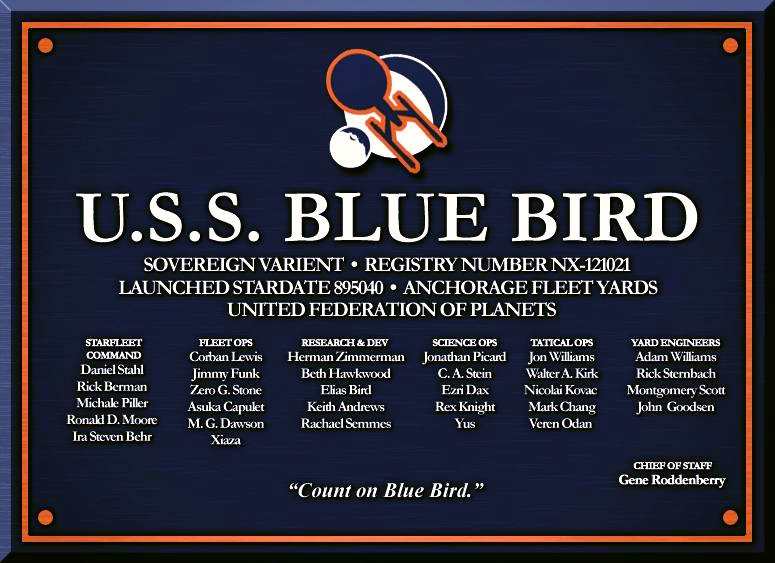
THEATRICAL RELEASE
This is where it is crunch time. The box office tells it all. The Voyage Home opened theatrically in North America on Thanksgiving weekend, November 26, 1986. Since
Star Trek had traditionally performed poorly internationally, the producers created a special trailer for foreign markets that de-emphasized the Star Trek part of the title, as well as retelling the events of The Wrath of Khan and The Search for Spock. Winter recalled that the marketing did not seem to make a difference. The Voyage Home was the first Star Trek film shown in the Soviet Union, screened by the World Wildlife Fund on June 26, 1987, in Moscow to celebrate a ban on whaling. Attending the screening with Nimoy, Bennett was amazed the film proved as entertaining to the Russians as it did with American audiences; he said "the single most rewarding moment of my Star Trek life" was when the Moscow audience applauded at McCoy's line, "The bureaucratic mentality is the only constant in the universe. We'll get a freighter." Bennett believed it was a clear "messenger of what was to come."
In its first week, The Voyage Home ended "Crocodile" Dundee's 8-week reign of the American box office. The Star Trek film made $39.6 million in its first five days of release, exceeding The Search for Spock's opening by $14 million. Ultimately the film grossed a global total of $133,000,000, against its $21 million cost ($1 million under budget). In six weeks, The Voyage Home sold $81.3 million in tickets, more than the franchise's second or third film, and almost as much as Star Trek: The Motion Picture. The film was a major commercial success for Paramount, which released five of the top ten films of the year, and garnered 22 percent of all money taken in at American theaters. Much of the credit for Paramount's success was given to chairman Frank Mancuso, Sr., who moved The Voyage Home's release from Christmas to Thanksgiving after research showed that the film might draw filmgoers away from The Golden Child.
Vonda N. McIntyre wrote a novelization that was released at the same time as the film. It was the biggest tie-in novel published by Pocket Books, and spent eight weeks on The New York Times bestseller list, peaking at #3. MCA Records released the film's soundtrack November 26, 1986.
WHAT THE CRITICS SAID
The Voyage Home received mostly positive reviews - Nimoy called it the most well-received of all Star Trek films made at that
point - and it appealed to general audiences in addition to franchise fans. The movie was a "loose, jovial, immensely pleasurable Christmas entertainment" for The Washington Post's Paul Attanasio,[ and a retrospective BBC review called the film "one of the series' strongest episodes and proof that the franchise could weather the absence of space-bound action and the iconic USS Enterprise, and still be highly enjoyable". Although Janet Maslin of The New York Times admitted the film's plot was "demented", she wrote that the film "has done a great deal to ensure the series' longevity." Rushworth Kidder of the Christian Science Monitor praised the film for giving audiences a view of their modern life from a different perspective, while simultaneously proving that a film does not need to have murder, violence, innuendo or even a main villain for dramatic storytelling.
The film's "fish out of water" comedy and acting were mostly lauded. The Courier Mail wrote that the film was funnier than its predecessors, and while not "flippant", a sense of humor was revealed through the efforts of the cast, writers and director. Newsweek's David Ansen considered The Voyage Home not only the most light-hearted of the movie franchise, but the most true in spirit to the original television series. A more negative review was offered by Liam Lacey of The Globe and Mail, who wrote that under Nimoy's "choppy" direction there was a lack of comic timing paired with feeble humor.
The special effects were generally well-received; critics for the Sydney Morning Herald and Courier Mail noted that the effects played a lesser role in the film compared to the characters and dialogue. Similarly, USA Today felt the lack of special effects allowed the cast to "prove themselves more capable actors than ever before." Maslin wrote that Nimoy's technical direction left "much to be desired" (pointing out a special effects scene where the Bird-of-Prey does not cast a shadow on the whaling ship as a mistake), but his "unmistakable" sincerity made up for these issues.
The Voyage Home garnered 11 nominations at the 14th annual Saturn Awards, tying Aliens for number of nominations. Nimoy and Shatner were nominated for best actor for their
roles, and Catherine Hicks was nominated for best supporting actress. At the 59th Academy Awards, The Voyage Home was nominated for Best Cinematography, Sound (Terry Porter, David J. Hudson, Mel Metcalfe and Gene Cantamessa), Sound Effects Editing, and Original Score.
LINKS:
http://en.wikipedia.org/wiki/Star_Trek
http://en.wikipedia.org/wiki/Star_Trek_IV:_The_Voyage_Home
http://en.wikipedia.org/wiki/USS_Bluebird_%28AMS-121%29
http://www.shipspotting.com/gallery/photo
id 791448
http://www.history.navy.mil/danfs/b7/bluebird-ii.htm
http://en.wikipedia.org/wiki/USS_Penguin_%28ASR-12%29
http://en.wikipedia.org/wiki/USS_Bluebird_%28ASR-19%29
http://www.history.navy.mil/
http://www.navsource.org/archives/09/32/3219.htm
http://www.hullnumber.com/ASR-19
http://www.startrekfreedom.com/wiki/index.php/Bluebird_class
|













